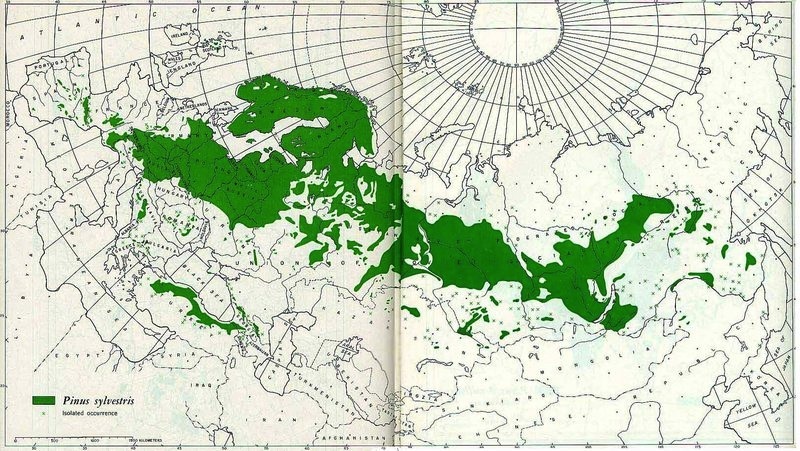Scotch Pine : History of Distribution
The Scotch pine comprised approximately 70% of the post-glacial forests in Scotland. It was nicknamed the “Wood of Caledon”, due to its abundance in the Caledonian boreal forests of Scotland. (Forestry Commission Scotland, 2013). It was brought to the US from Europe, probably in the colonial days. Its applications in shipbuilding led to the planting of many of these trees, perhaps notably in 1613 when a decree by King James led to the planting of many Scotch pines in Scotland (using seeds from England) in order to support a growing naval fleet (Richardson, 2000). It is a very aggressive grower, and is the most widely distributed pine in the world. There was an attempt to cultivate it as a common exotic tree in Iceland, and a number of plantations were created, but by 1950 these efforts soon proved futile. The trees were attacked in large numbers by the woolly aphid, causing the Forestry Society to decide to cease further planting of the Scotch pine (Alden, Mastrantonio, & Ødum, 1993) Today, the native range of the Scotch pine includes Scandinavia, Scotland, and the northern regions of Europe and Asia, and it has become naturalized in many of the northern United States. According the Vermont Agricultural Report, even in 1921 the Scotch pine was very popular and had been/was being planted often.

